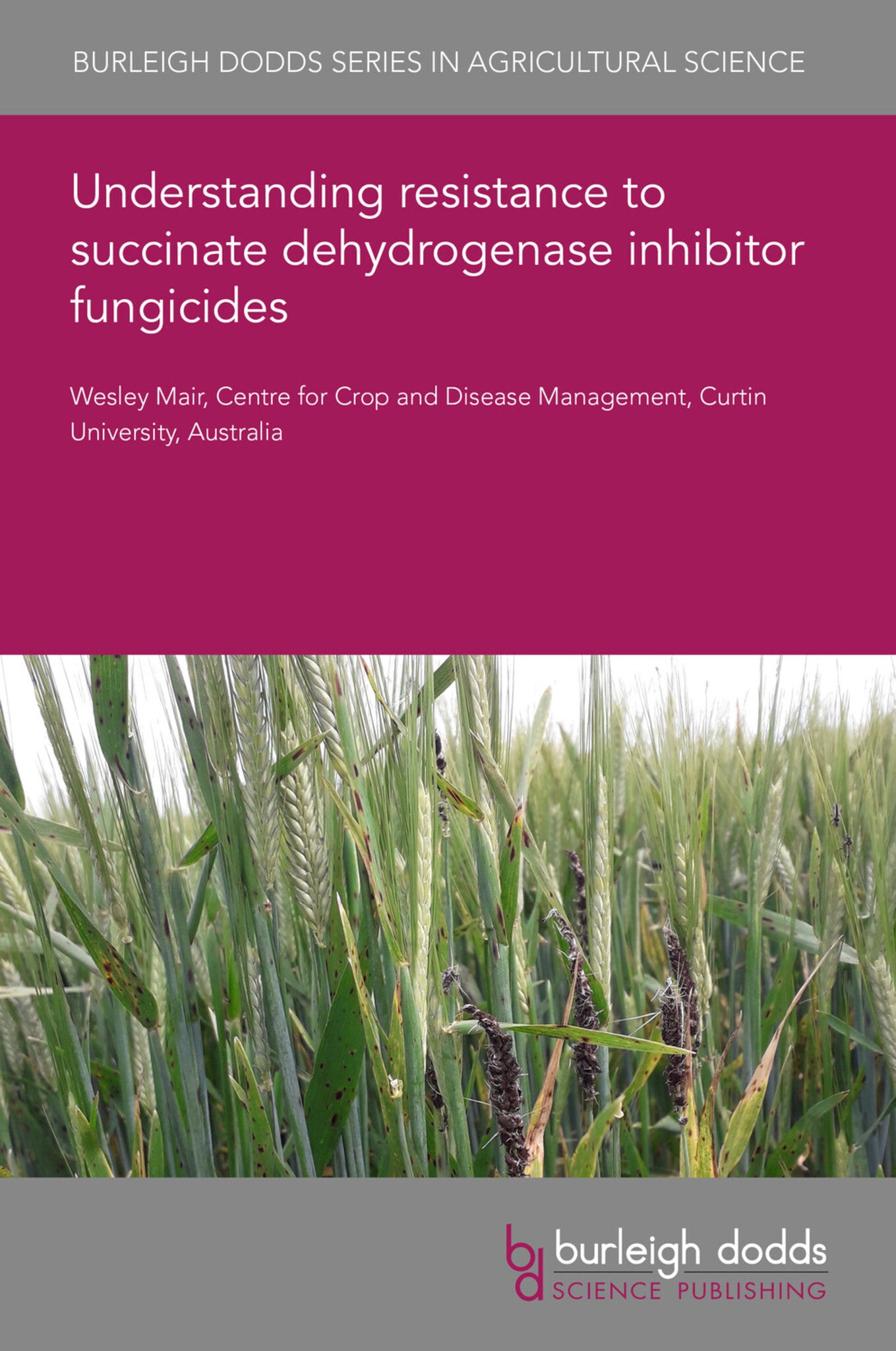We're sorry. An error has occurred
Please cancel or retry.
Understanding resistance to succinate dehydrogenase inhibitor fungicides

Some error occured while loading the Quick View. Please close the Quick View and try reloading the page.
Couldn't load pickup availability
- Format:
-
25 September 2023

The Succinate Dehydrogenase Inhibitor (SDHI, Carboxamide, Group 7) compounds represent the fastest growing fungicide class. The spectrum of activity of SDHIs encompasses Ascomycete, Basidiomycete, and Deuteromycete pathogens on a wide variety of hosts. SDHIs are a structurally diverse class, currently comprised of 24 compounds. They inhibit the activity of the succinate dehydrogenase enzyme complex (Sdh, respiratory Complex II), which couples the oxidation of succinate to fumarate in the tricarboxylic acid (TCA, Krebs) cycle with the reduction of ubiquinone to ubiquinol in the mitochondrial electron transport chain. Resistance emerged rapidly following the introduction of SDHIs and has been reported in at least 30 species, mainly associated with target site mutations in Sdh subunits B, C, and D. As SDHI resistance may be associated with fitness penalties, evaluating the fitness of resistant isolates is a key part in the assessment of the risk of fungicide resistance developing in the field.

TECHNOLOGY & ENGINEERING / Pest Control, Pest control / plant diseases, TECHNOLOGY & ENGINEERING / Agriculture / Agronomy / Crop Science, TECHNOLOGY & ENGINEERING / Agriculture / Sustainable Agriculture, Agronomy and crop production, Sustainable agriculture, Agricultural science

- 1 Introduction
- 2 Mode of action
- 3 Resistance mechanisms
- 4 Fitness cost and resistance risk assessment
- 5 Case study
- 6 Acknowledgements
- 7 References



